If you’re in the business of sales, odds are good you can find the vast majority of your prospects and customers on social media. This means it’s critical to learn where your clients spend time online and how to craft content that will drive new business and increase sales.
To give you a sense of the massive outreach potential of social media, here are user numbers for some of the top platforms:
- Facebook: 1.71 billion users
- Google+: 300 million users
- Instagram: 400 million users
- LinkedIn: 300 million users
- Pinterest: 100 million users
- Snapchat: 100 million users
- Twitter: 320 million users
- Youtube: Over 1 billion users
When you pay attention to both where your potential customers spend time online —and combine this with an awareness of your company’s core strengths and brand—you can develop a strategic approach to online sales. Let’s take a closer look at how various social media platforms can integrate with your sales strategy.
Which Social Platform is Right for Your Sales Pipeline?
Before signing up for an account, it’s critical to learn the core uses and demographics of a given social platform. Here’s an overview of 12 of the most useful social platforms for driving sales.
If your goal is to build community among your consumer base, then Facebook is the place to be. It’s especially good for facilitating conversations between brands and their users. Because it’s the most popular social site with the most active user base, Facebook is also a valuable platform if you’re trying to reach a broad audience. User data reveals that demographics span the full range of ages, gender, education, income level, and location.
- Best for building a community
- Among adult users,
- 74% went to college
- 71% have some college experience
- 70% graduated high school or less

On Instagram, a strong visual identity and high-quality imagery are a must. The site is growing like gangbusters, especially among young, urbanusers. The site pairs well with Facebook and/or Twitter, which allows you to share text-based content that wouldn’t be appropriate on Instagram.
- Best for companies with great photography
- Who are the photographers?
- 53% of 18–29 year olds
- 25% of 30–49 year olds
- 11% of 50–64 year olds
- 6% of people 65+
- Of all online users,
- 29% of females use Instagram
- 22% of males use Instagram
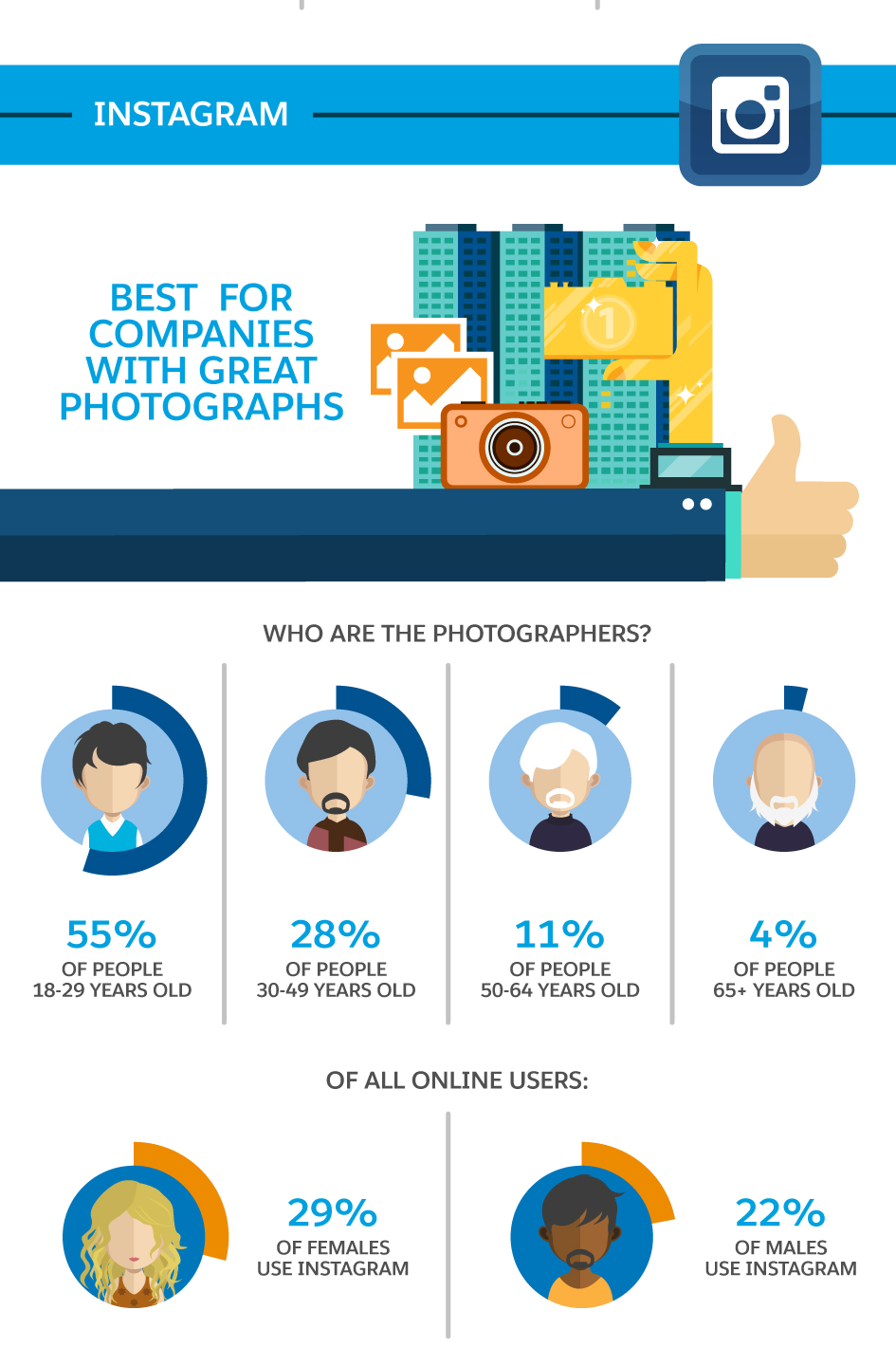
LinkedIn is all about professional networking, which means your brand will appeal to users if you share career and industry insights. LinkedIn is also especially fruitful for B2B companies. Users tend to boast high education levels, high incomes, and a nearly even distribution across age brackets.
- Best for career and industry insights
- Who’s on LinkedIn?
- 23% of 18–29-year-olds
- 31% of 30–49-year-olds
- 30% of 50–64-year-olds
- 21% of adults over 65

Like Instagram, Pinterest is best for brands with a visual component. Just slightly more adults use Pinterest than Instagram, and Pinterest skews heavily toward women: Approximately 44 per cent of online women use Pinterest, compared to only 16 per cent of men. The site also trends young, with 37 per cent of people under the age of 50 using the site. If your target demographic falls into these categories, then Pinterest can be a goldmine for engaging users.
- Best for highly visual industries or marketing
- 42% of online women use the site, while just 13% of online men do

Twitter is all about trending topics and topical conversations. It’s a great option for reaching urban and/or suburban consumers: 25 per cent of Twitter’s user base resides in urban areas, while 23 per cent are in suburban areas. If you’re attempting to cultivate a hip, active, and vocal brand, then Twitter is an exceptional platform. Like Facebook, it’s great for facilitating conversation between consumers and brands.
- Best for topical and timely conversations
- Where do adult users live?
- 25% in urban areas
- 23% in suburban areas
- 17% in rural areas
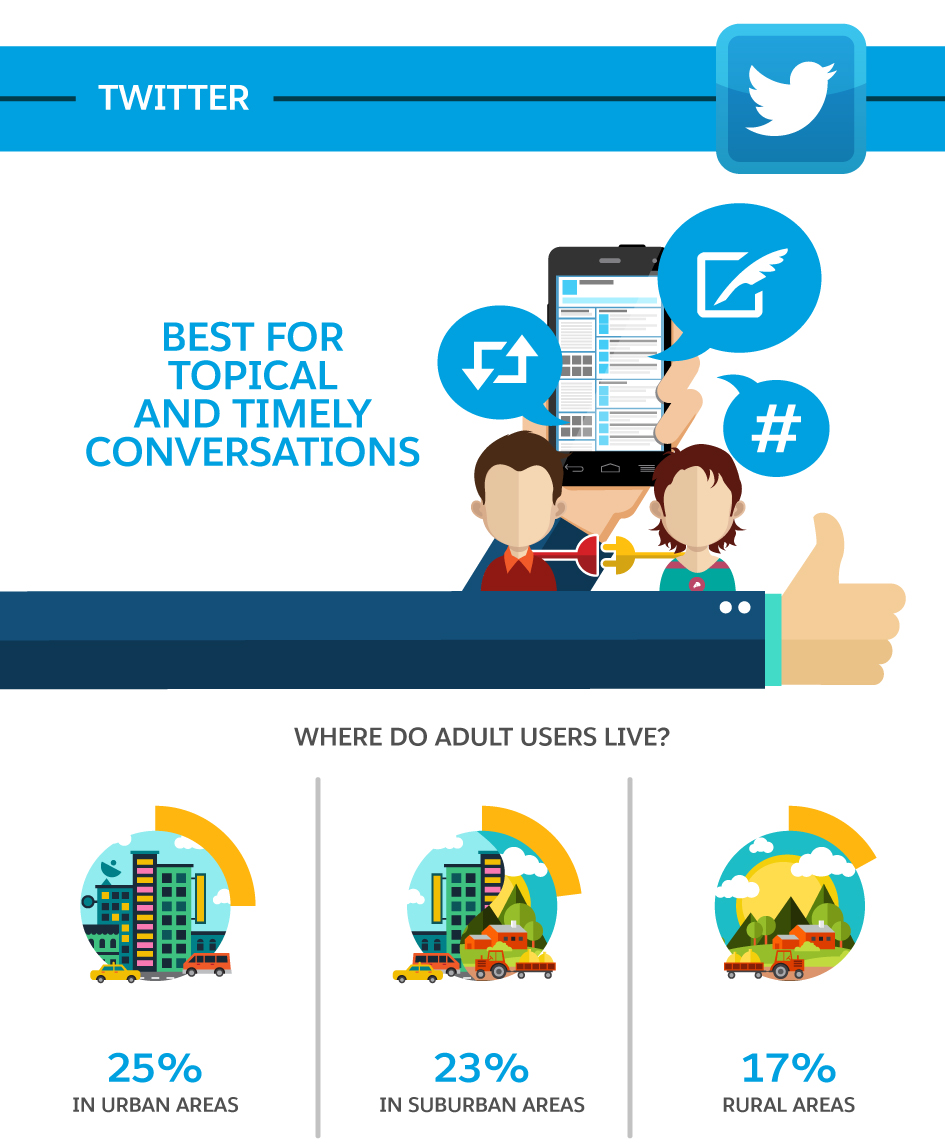
YouTube
YouTube is all about video, and is rapidly becoming a platform where brands can differentiate themselves as funny, creative, or unique. And withmore than 1 billion users, YouTube has the potential to generate a truly massive audience. It’s especially primed for capturing younger demographics: The site reaches more 18- to 49-year-olds than any cable network. But as brands catch on to the power of YouTube, the competition for all those eyeballs is high.
YouTube
- Best for compelling video
- Over 1 billion users
- Almost 1/3 of all people on the Internet
- Everyday people watch hundreds of millions of hours on YouTube and generate billions of views
- YouTube, and even just YouTube on mobile, reaches more 18-34 and 18-49 year-olds than any cable network

Meerkat
While less well known, Meerkat commands an audience of 120,000 users and growing. The platform allows users to live-stream video from their phones directly to their Twitter followers, so it’s best for visual content. The platform is unique in that it skews heavily toward males: 78 per cent of users are male.
Meerkat
- Live-stream video from your phone to Twitter followers
- 120,000 users
- 78% male, 22% female users
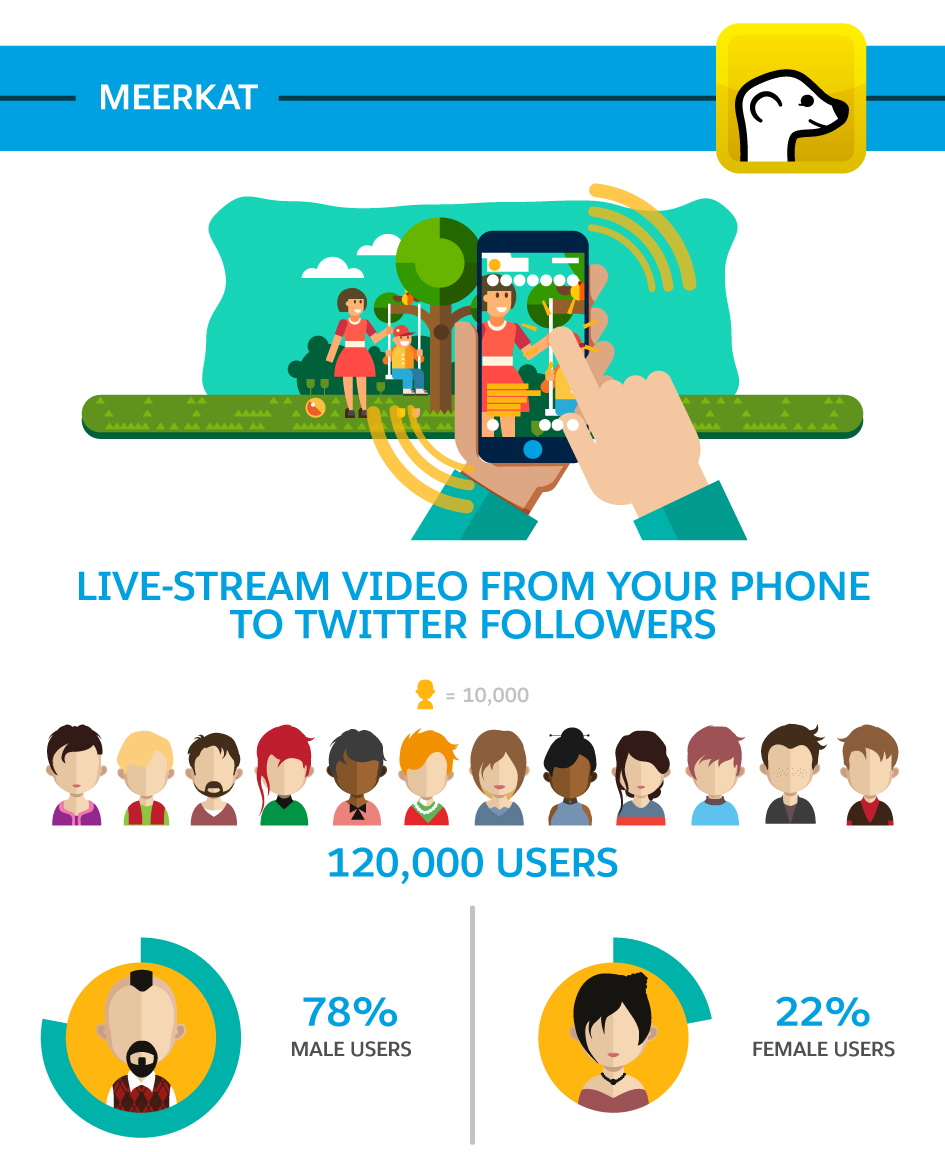
Periscope
Periscope is a direct competitor to Meerkat: It allows users to live-stream video from their phones to Twitter. The app is owned by Twitter, so integration is seamless. Periscope also has a significantly larger user base, with 10 million users (1.85 million of whom use the app daily). Similar to Meerkat, the app skews toward males: 71 per cent of users are men.
Periscope
- Twitter’s app for live-streaming video from your phone to Twitter
- 10 million users, and 1.85 million daily active users
- 71% male, 29% female users

Reddit boasts approximately 36 million user accounts, 9,800 communities, and a young, active user base. (Eighty-eight per cent of users visit the site multiple times a day.) It’s also one of the most difficult platforms to penetrate due to its dispersed user base and because users are skeptical of self-promotion on the site. Subtle content marketing is the name of the game here.
- Roughly 9,800 member-driven communities and forums
- Approximately 36 million user accounts
- 88% of visitors go to the site multiple times per day
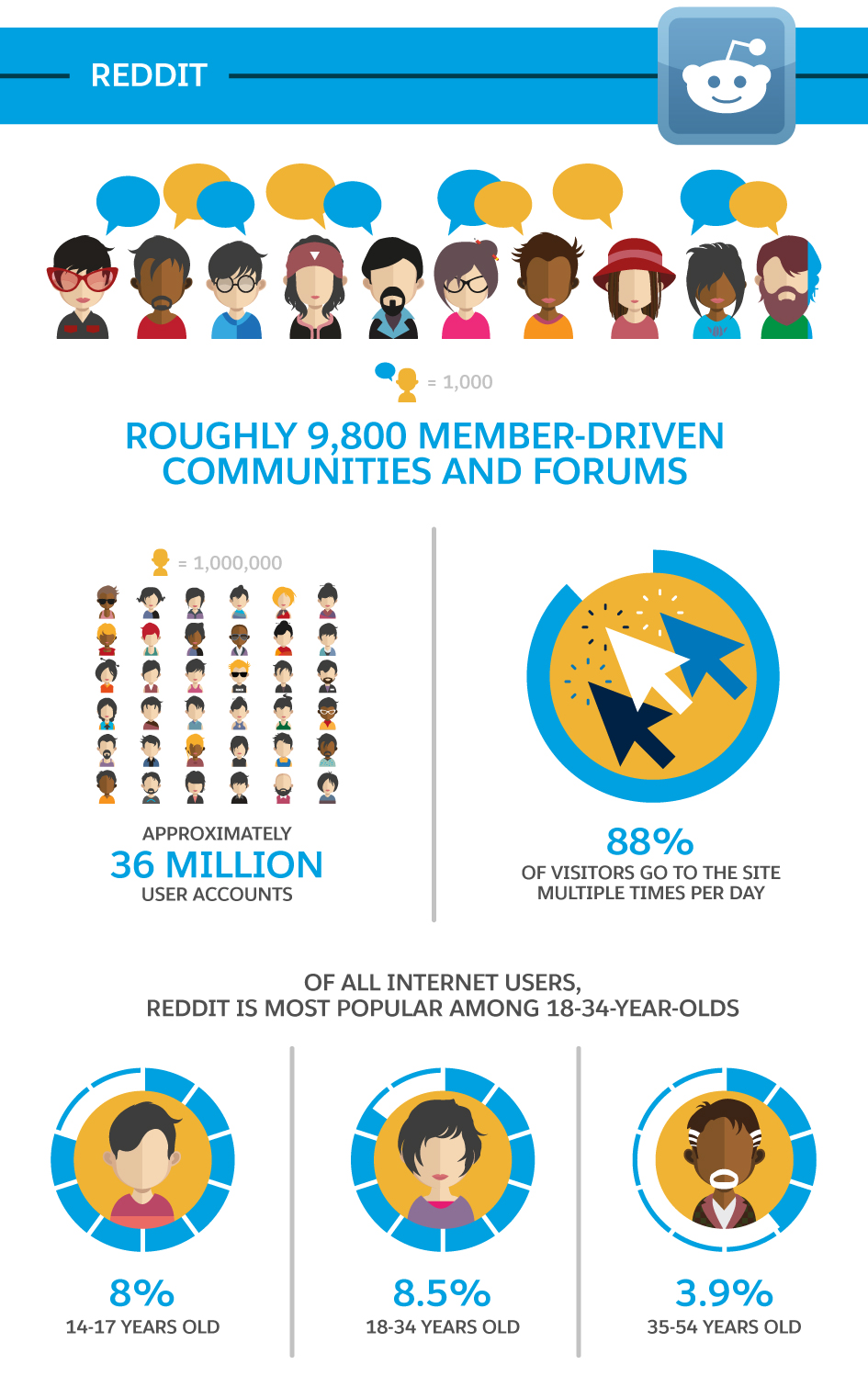
Snapchat
What began as a private sharing app between friends has grown into an impressive platform for brand building. Snapchat allows users to create captioned videos and photos that disappear once they’ve been viewed. The site’s users tend to be young; 45 per cent of adult users are between 18 and 24. The key to success here is creativity, humor, and being quick to the punch.
Snapchat
- Captioned videos and photos sent directly to other users that automatically disappear
- 45% of Snapchat's adult users are between 18 and 24
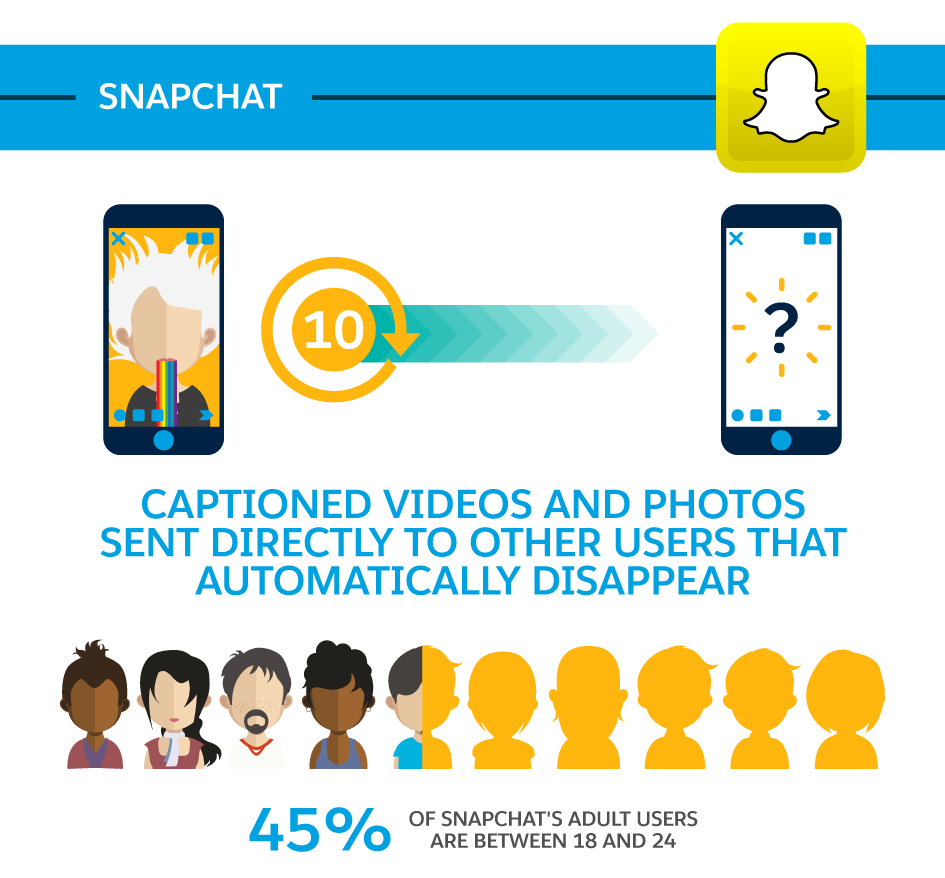
Vimeo
Success on this video-sharing site requires polished, high-quality content. If your brand is highly visual, investing time and energy with this platform can be well worth it: With 160 million monthly viewers, Vimeo has the potential to generate a large following.
Vimeo
- Video-sharing website
- 160 million monthly viewers and 35 million registered users

Vine
The 6.5-second looping video app had its heyday a few years ago, but it’s still a viable platform for brands and has launched a number of viral stars over the years. Vine is particularly effective for showcasing products, telling short stories, or simply sharing goofy content. With 28 per cent of adult users between the ages of 18 and 24, it’s important that Vine content be hip, engaging, and fun.
Vine
- 6.5-second-long looping videos
- Show off a new product
- Demo a new feature
- Tell a quick story
- Or Share something fun
- 28% of Vine’s adult users are between 18 and 24
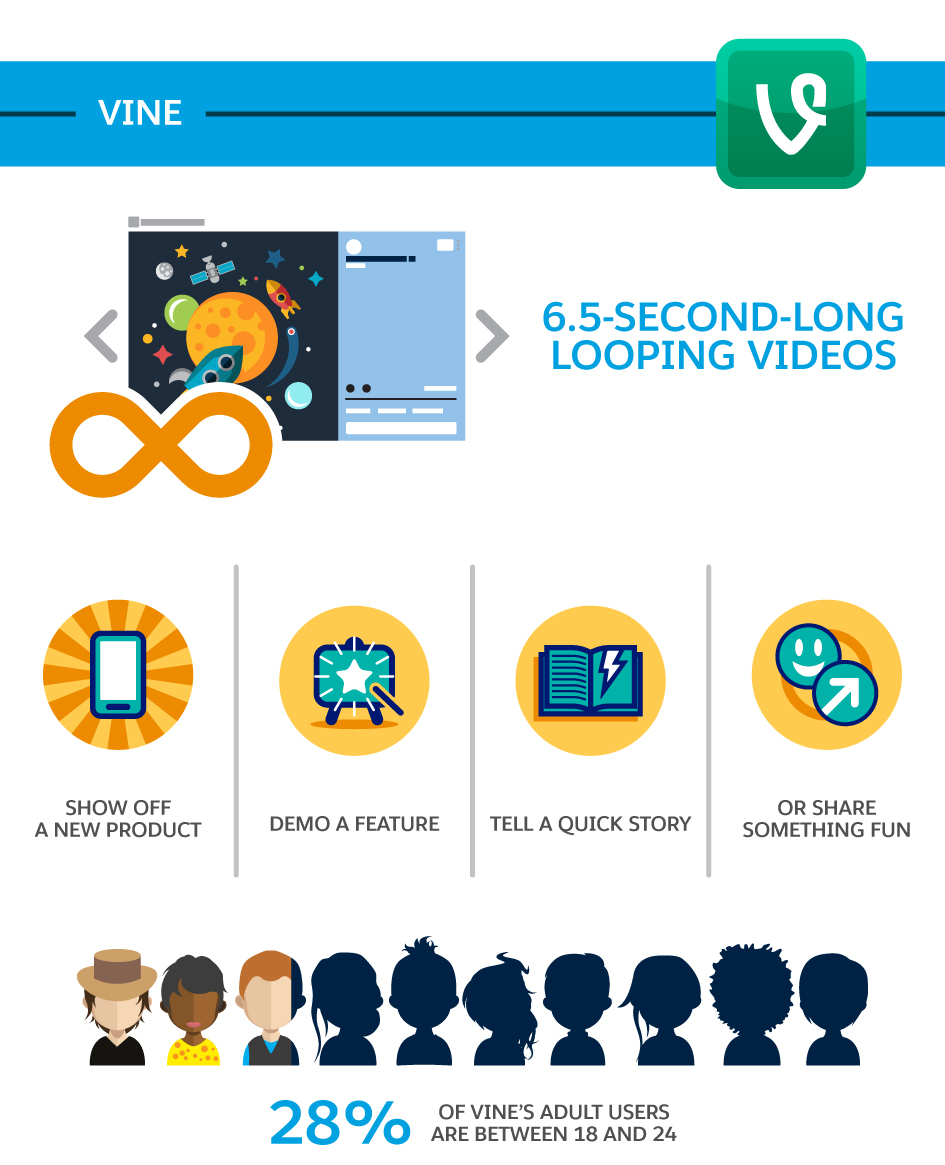
The wide array of social platforms available to salespeople means there is no one-size-fits-all approach to social media. Instead, building a successful online sales funnel requires identifying your brand’s strengths and target demographics, developing high-quality content and a distinct brand voice, and being open to a process of trial and error as you discover the social platforms that boost your sales most.
Share "How to Pick the Right Social Platform to Grow Your Sales" On Your Site



